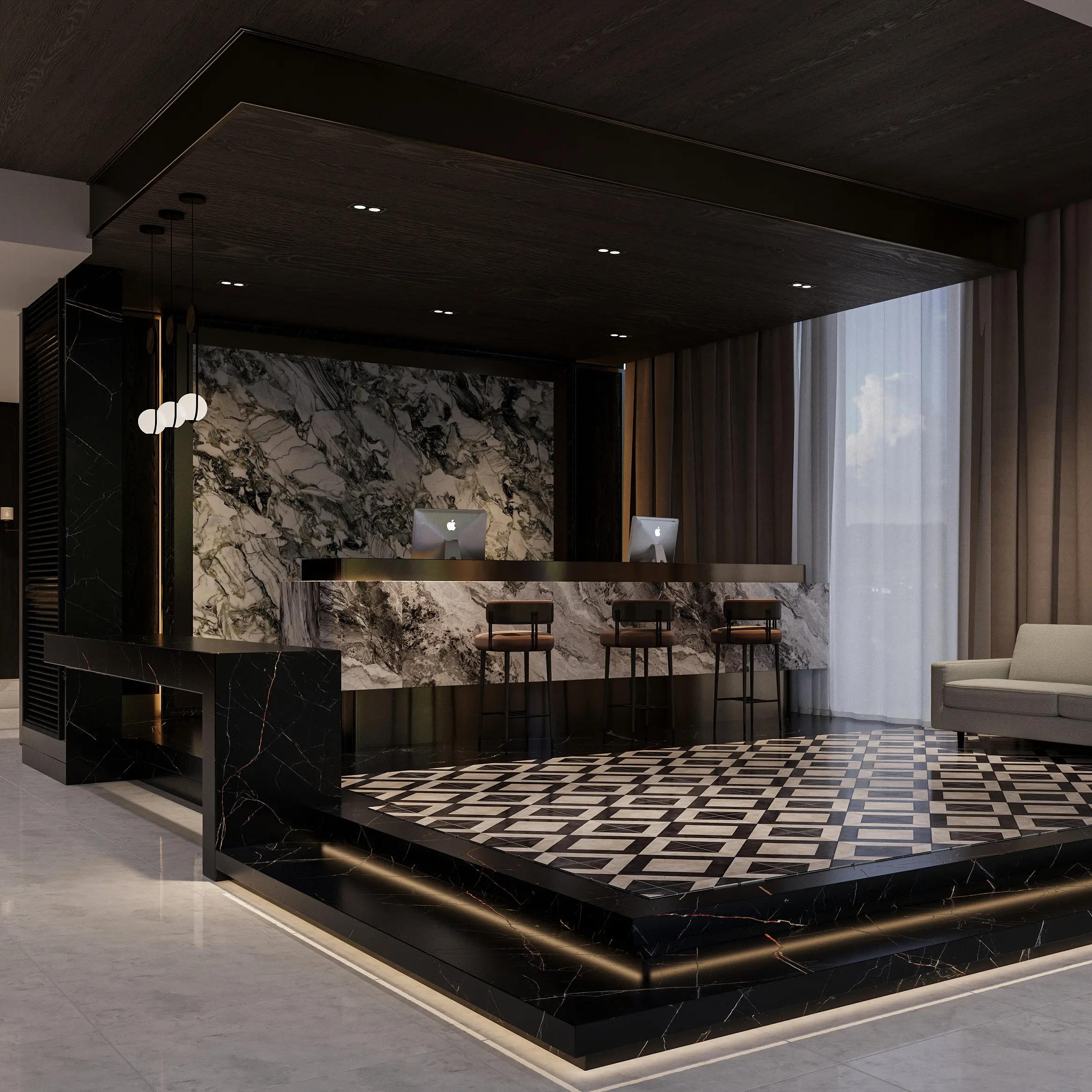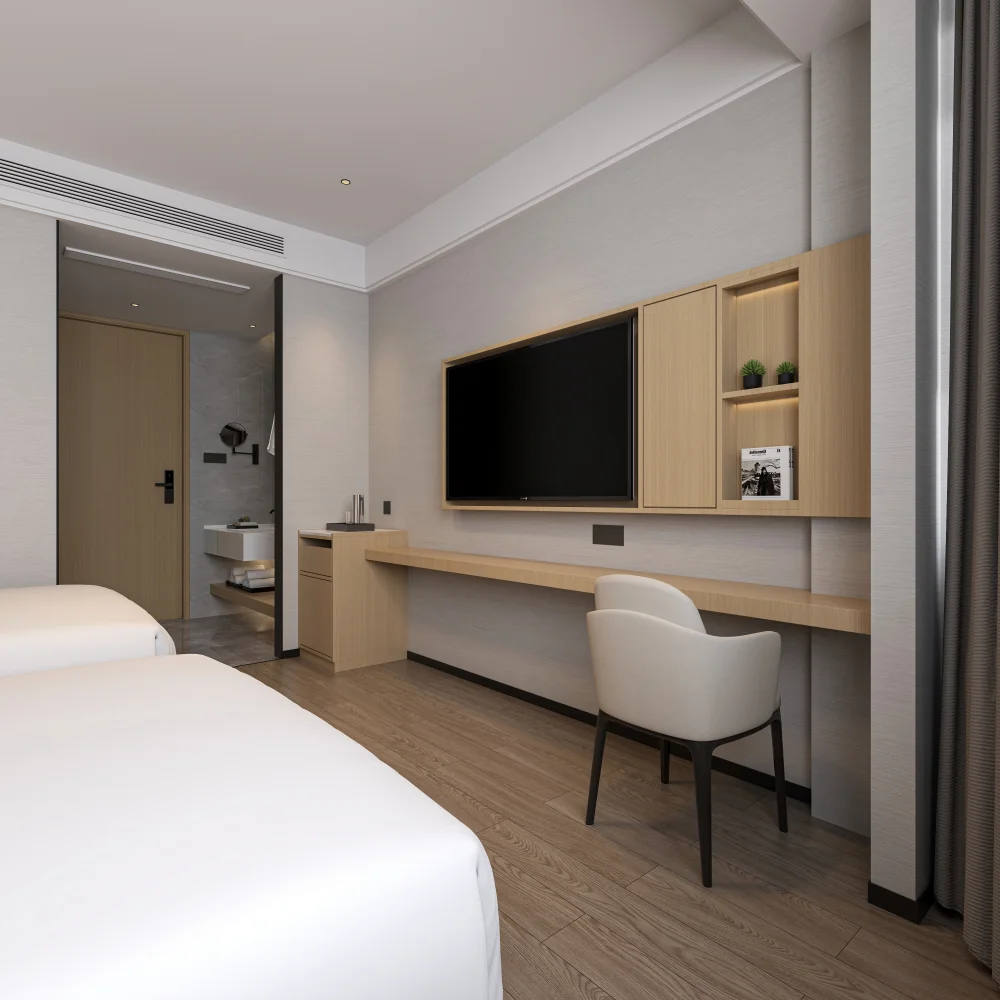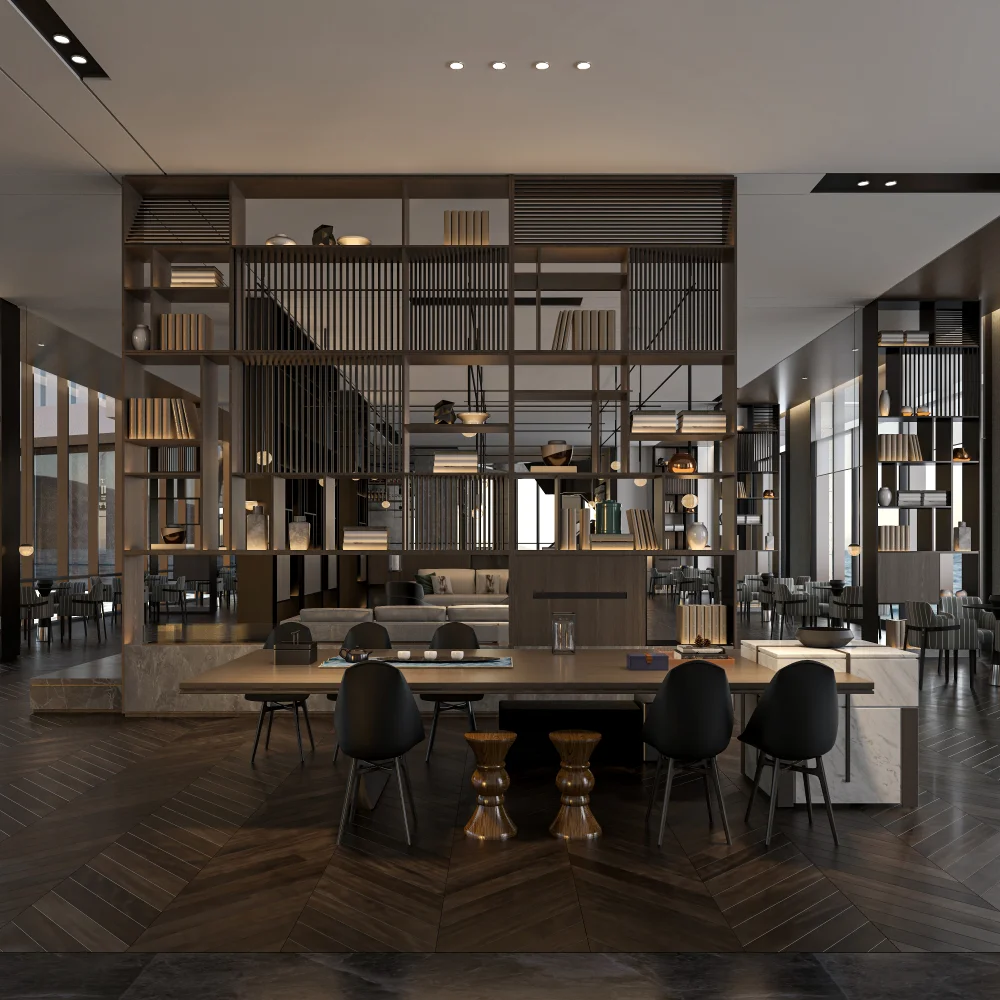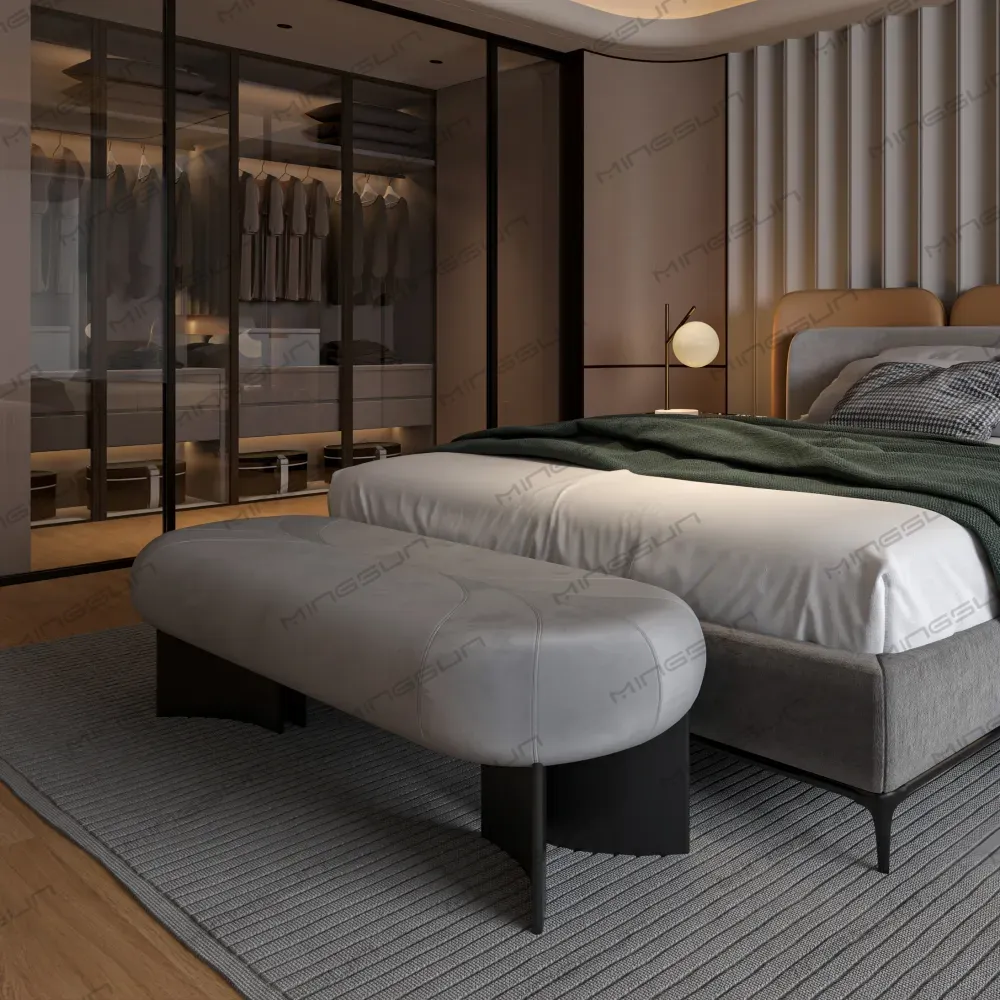Hotel Furniture Layout Tips: How to Balance Function, Aesthetics, and Space
This guide helps you create efficient and beautiful hotel furniture layouts. From room zoning to custom furniture design, discover techniques that work in real-world projects.

- Understanding the Purpose of a Well-Planned Hotel Furniture Layout
- Why Layout Planning Impacts Guest Experience
- Key Principles of Functional Hotel Furniture Design
- 1. Emphasise user-centred design
- 2. Prioritise comfort and ergonomics
- 3. Functionality meets durability
- 4. Maximise space for operational effectiveness
- Creating a Seamless Blend of Aesthetics and Comfort
- Balancing Visual Flow and Practicality
- Material and Color Coordination
- Emotional Connection of the Guest
- Space Optimization Strategies for Different Room Types
- The Role of Custom Furniture in Modern Hotel Design
- Common Mistakes in Hotel Furniture Layout—and How to Avoid Them
- How Lighting, Texture, and Furniture Placement Work Together
- Partnering with a Professional Hotel Furniture Manufacturer
- Why Choosing the Right Partner Matters
- MINGSUN — Crafting Excellence in Every Detail
- Conclusion
Designing a standout hotel room involves much more than just choosing elegant décor or luxurious finishes. At the core of every well-planned hotel furniture layout is the perfect harmony between functionality, aesthetics and space efficiency. A well-executed layout enhances guest comfort and convenience, and reinforces the hotel’s brand identity, leaving a lasting impression on every visitor.
In this comprehensive guide, we share expert insights and practical strategies for creating balanced hotel furniture arrangements that elevate both form and function. Whether you are a hotel owner, interior designer or custom hotel furniture supplier, mastering the art of layout planning is essential for crafting unforgettable guest experiences and ensuring long-term success in the competitive world of hospitality design.
Understanding the Purpose of a Well-Planned Hotel Furniture Layout
Before arranging any furniture, it’s important to understand why the layout of hotel furniture is so crucial. Furniture arrangement is about more than just visual composition; it also shapes how guests interact with the space.
Well-planned hotel furniture design ensures that every inch of the room serves a purpose, offering both comfort and practicality. Properly placed furniture can guide movement, maximise usable space and enhance accessibility, all while maintaining an inviting aesthetic.
A good layout defines different zones within the room, such as sleeping, lounging, working and storage areas. Each zone should be cohesive yet distinct, enabling guests to move naturally from one activity to another. When these principles are ignored, even the most beautiful furniture can feel cluttered or inconvenient.

Why Layout Planning Impacts Guest Experience
The psychological impact of a strategic layout of hotel furniture can be experienced by the guests. Proper arrangement of the layout gives visual harmony and comfort and improper arrangement may result in frustration or discomfort. As an example, a desk in a dark room or a wardrobe that does not allow movement may have a negative impact on the overall experience of a guest in the hotel.Hotels with a high level of guest satisfaction usually focus on careful planning of space since the very beginning of the hotel interior design. This makes sure that the aesthetic decisions are in line with the ergonomic comfort, and the environment is both sophisticated and comfortable.
Key Principles of Functional Hotel Furniture Design
Before paying attention to decoration or luxury finishes, a designer should ensure that the furniture in a hotel is functional. All furniture in a hotel room should support usability, safety and comfort; for example, the headboard and bedside table should be supportive.
1. Emphasise user-centred design
All design decisions should be based on the guest experience. Begin by defining the target guests: business travellers, families or leisure tourists. The needs of each group differ, and this determines how the furniture should be arranged. For example, business guests may be more interested in a well-lit workstation, whereas families may require more open space and storage.
2. Prioritise comfort and ergonomics
The best custom hotel furniture designs focus on comfort and are based on ergonomic principles. Desks must be the right height for extensive laptop use, and chairs should provide lumbar support. Beds should be easy to access and clean, with clear walking space on both sides.
3. Functionality meets durability
Hotel furniture is subjected to heavy usage. Designers must select beautiful and durable materials and finishes. Scratch-resistant tabletops, reinforced joinery and moisture-proof laminates guarantee that each piece can endure constant wear without losing its aesthetic value.
4. Maximise space for operational effectiveness
All furniture influences the efficiency of housekeeping and maintenance operations. Mobile chairs and surfaces that are easy to clean, as well as modular elements, can simplify the cleaning and replacement process. This allows hotels to maintain a perfect appearance all year round.
Functional design is not just a practical issue, but also makes a statement about the hotel's operational expertise. Intelligent hotel furniture design balances design, comfort and service efficiency.

Creating a Seamless Blend of Aesthetics and Comfort
While a visually striking hotel room is important, it must also provide a sense of ease and relaxation. The key to great hotel furniture design is achieving harmony between style and comfort.
Balancing Visual Flow and Practicality
Aesthetic design starts with balance: furniture that fits the room's proportions and architectural features. Massive, dense objects can make a small room feel crowded, whereas light colours and smooth lines create an impression of spaciousness. Every detail, including fabrics and finishes, must reflect the hotel's identity.
For example, a boutique hotel may prefer custom-made furniture crafted by hand to demonstrate the local artistry and resources, whereas a business hotel may prefer sleek minimalism to demonstrate modern efficiency.
Material and Color Coordination
A unified palette unites the whole room. Warm wood colours go well with neutral fabrics to create a classic look, while metal details and bright colours can be used to create a modern look. The choice of materials used for the furniture also influences comfort; for example, soft upholstery is more relaxing, while high-gloss surfaces make rooms look bigger.
Emotional Connection of the Guest
As well as the appearance, guests are expected to feel comfortable. This connection is affected by the layout of the furniture, the feel of the materials and the quality of the craftsmanship. When aesthetics combine with comfort, guests don't just like the design — they remember it.

Space Optimization Strategies for Different Room Types
No two hotel rooms are alike, and optimizing each layout requires understanding its specific purpose and dimensions. Here’s how to approach furniture planning for various hospitality settings.
1. Standard guest rooms
Efficiency is important in standard rooms. The bed should anchor the space and is usually placed in the middle of the room facing the window to maximise light. Side tables, a writing desk and a small lounge chair supplement the essentials. The trick is to ensure there are open walking paths with at least 900 mm clearance to avoid congestion.
2. Suites and executive rooms
Bigger rooms are more conducive to creativity. Use furniture arrangement to separate the space into areas for sleeping, working, dining and relaxing. Define each area using rugs, lighting and partial partitions. Flexibility can be achieved here through custom hotel furniture solutions, which make each zone feel unique yet unified.
3. Family or accessible rooms
Family and guest rooms should be accessible to people with accessibility needs without compromising safety. Rounded corners, broader clearances and low-rise storage are some of the features that enhance user-friendliness. Modular hotel furniture can be modified to suit various guest configurations without compromising on aesthetics.
4. Compact or boutique rooms
Multifunctional furniture is essential in small rooms. Wall-mounted desks, folding tables and under-bed storage can greatly increase the available space. In this case, custom hotel furniture suppliers are crucial, as they can provide bespoke solutions for challenging layouts.
5. Public and semi-public areas
As well as guest rooms, space optimisation can be applied to hotel lobby furniture and the lounge area. Light yet formal designs promote socialisation while remaining comfortable and classy. Leaving adequate distance between sofas and accent chairs encourages conversation flow without congestion.
The Role of Custom Furniture in Modern Hotel Design
In today’s competitive hospitality market, differentiation is key. Custom hotel furniture plays a pivotal role in establishing a hotel’s identity and shaping the guest experience.
Personalisation for brand consistency
Custom designs enable hotels to convey their brand values through their furniture. Whether the style is minimalist and Nordic-inspired or lavish and Art Deco, tailor-made designs ensure that every item complements the property’s overall narrative.
Functionality tailored to operations
Standardised furniture often fails to meet unique operational demands. With custom hotel furniture design, however, dimensions, materials and functions can be adjusted to match each property’s floor plan, lighting and brand standards.
Quality control and sustainability
Custom manufacturing enables better oversight of materials, finishes, and sustainability practices. Many hotels now prefer to use custom furniture suppliers who can certify the eco-friendly sourcing of wood, the use of non-toxic finishes, and waste-minimising production processes.
Long-Term Cost Efficiency
Although bespoke furniture may seem more expensive initially, it often offers superior long-term value thanks to its durability and reduced need for replacement. A hotel furnished with custom pieces will maintain a fresher, more consistent appearance over time.

Common Mistakes in Hotel Furniture Layout—and How to Avoid Them
Even the most luxurious hotels can appear less impressive if the furniture is not arranged well. Read on for some common design mistakes and how to avoid them.
1. Overcrowding the space
Adding too much furniture can make a room feel cramped. Focus on essential pieces that enhance functionality without compromising on openness. Negative space, or empty areas that allow the eye to rest, is equally important.
2. Ignoring the guest flow
Always consider how guests will move through the space. Pathways from the door to the bed or bathroom should be kept clear. Improper layout can cause guests to bump into furniture, which diminishes comfort and safety.
3. Disconnected style elements
Mixing too many styles, colours or finishes can create visual chaos. Stick to a unified design language, especially when coordinating hotel lobby furniture with guest room themes.
4. Poor lighting coordination
Lighting can dramatically influence the perception of space. Avoid placing furniture in front of natural light sources or in areas where artificial lighting would cast unwanted shadows. Integrating lighting design into the layout stage ensures harmony.
5. Lack of flexibility
Hotels evolve, and their furniture should too. Opting for modular or customisable hotel furniture allows for easy reconfiguration during renovations, seasonal adjustments or in response to changing guest needs.
How Lighting, Texture, and Furniture Placement Work Together
Lighting and texture can transform static spaces into dynamic, sensory environments. The way they interact with hotel furniture determines how guests experience comfort and luxury.
Lighting as a design tool
Strategic lighting can highlight focal points and create mood. For instance, bedside lamps create an intimate atmosphere, while recessed ceiling lights provide general illumination. Layered lighting enhances depth, drawing attention to the craftsmanship and finishes of furniture.
Texture and material harmony
Combining smooth and rough textures, such as leather chairs with stone-topped tables, creates tactile balance. Soft textiles enhance cosiness, while reflective materials add brightness. Together, texture and lighting define the visual rhythm of hotel interior design.
Furniture placement and visual balance
The positioning of furniture in a hotel room affects how light interacts with it. Avoid blocking windows or reflective surfaces. Strategically placing mirrors or metallic accents can amplify natural light, making smaller spaces appear larger and more welcoming.
Partnering with a Professional Hotel Furniture Manufacturer
Designing an exceptional hotel interior requires not only creativity but also reliable production support. Partnering with an experienced manufacturer ensures that your vision is executed with precision, efficiency, and consistency.
Why Choosing the Right Partner Matters
A professional manufacturer can bridge the gap between concept and completion. Every stage, from technical drawings to material sourcing and final installation, requires expertise. Reliable custom hotel furniture suppliers can anticipate potential challenges, optimise costs and maintain quality control across large-scale projects.
MINGSUN — Crafting Excellence in Every Detail
MINGSUN is one of China’s leading custom hotel furniture manufacturers. The company has over 12 years of expertise, a 10,000-square-metre production facility and more than 200 skilled craftsmen. The company uses advanced technology and strict quality control to create stylish, durable furniture that meets international standards. MINGSUN provides custom furniture solutions for hotel guestrooms, lobbies, restaurants and leisure spaces, offering full OEM/ODM services and global logistics support. Their in-house design team ensures that each piece reflects both brand identity and operational functionality, helping clients to bring their hospitality visions to life.

Conclusion
Designing an effective layout for hotel furniture requires a delicate balance of functionality, aesthetics and space efficiency. Every piece of furniture, from the lobby to the bedroom, plays a role in shaping the guest experience and reinforcing the hotel’s brand image.
By prioritising functional design principles, making use of custom furniture design and collaborating with experienced manufacturers such as MINGSUN, hotels can create environments that are visually appealing and operationally efficient.
In the hospitality industry, great design is not just about what guests see; it's also about how they feel. When furniture, lighting and layout work together harmoniously, the result is a space that looks beautiful and performs flawlessly, ensuring that every guest leaves with a positive impression.
Once you understand how to design the layout, the next challenge is selecting the right furniture that fits both your concept and budget. Our article on how to choose the right hotel furniture walks you through materials, quality standards, and supplier selection.

12 Common Hotel Design Mistakes and How to Avoid Them

Unlocking Opulence: The Ultimate Guide to Luxury Hotel Room Layouts for 2026 & Beyond

Best Hotel Furniture Manufacturers Predicted for 2026

Decoding Hotel Room Sizes: Your 2026 Guide to Standard Dimensions & Maximizing Space
Make an appointment with us today

Modern Hotel Dining Furniture Set-Custom Designed Wooden Tables, Upholstered Chairs & Banquette Seating
Create a lasting impression with our custom-designed hotel dining furniture set, crafted for modern luxury hotels and upscale restaurants.
Featuring elegant wooden tables, ergonomic blue-upholstered chairs, and built-in banquette seating, this collection blends comfort, style, and durability.
As a leading manufacturer in Guangzhou, we deliver end-to-end solutions - from concept design and 3D visualization to production and global shipping - all at factory-direct prices.

Hotel Bedroom Accent Furniture: The Sculptural Oval Bed End Bench
Introduce a blend of contemporary design and plush functionality to your hotel bedrooms with the Sculptural Oval Bed End Bench. This designer piece features a long, softly upholstered oval seat that rests upon two striking, curved metal legs. The generous padding and elegant, minimalist shape offer both a comfortable place to sit and an aesthetic focal point at the foot of the bed.
Its clean lines and luxurious materials, including the smooth upholstery and contrasting dark, architectural metal base, make it perfect for executive suites, high-end guest rooms, and VIP residences. The bench serves as a practical surface for luggage or clothing and instantly elevates the perceived value and design standard of the entire room.

The Modern Statement Marble Vanity Console
The Modern Statement Marble Vanity Console transforms the hotel bathroom or executive suite wet area into a luxurious, functional sanctuary. This vanity features an expansive countertop and integrated sink, all crafted from pristine white Carrara-style marble. Its striking foundation is a suspended cabinet unit finished in a dramatic, high-gloss Red Emperador-style marble veneer, creating a beautiful contrast of light and dark, classic and contemporary.
The design includes integrated open shelving for visible towel storage and an extended metal bar that functions as a towel rack. Coupled with a dramatic, custom-framed illuminated mirror, this vanity provides a cohesive, high-end look that is both visually stunning and highly practical for the demands of luxury commercial hospitality.

The Executive Smart Tea & Coffee Station
The Executive Smart Tea Station redefines the in-room beverage experience, seamlessly integrating advanced functionality with a sophisticated, compact design. This multi-purpose cabinet features a sleek, dark wood finish and a durable, heat-resistant countertop with an integrated induction cooker—perfect for quickly boiling water for tea, coffee, or instant refreshments.
Designed for efficiency and elegance, it includes a clever sliding storage drawer and an open alcove, providing ample space for organized display and concealment of tea sets, coffee pods, gourmet ingredients, or mini-bar items. With a minimal footprint (H 700mm x W 600mm x D 450mm), and concealed, heavy-duty casters for mobility, this station is an essential upgrade for luxury hotel suites, executive lounges, or high-end residential spaces seeking a refined and functional hospitality amenity.
Get more industry insights
Looking for the right solution? Fill out the form and get a free quote.
Our experts will respond quickly with personalized options that fit your needs.



 Scan QR Code
Scan QR Code



MINGSUN
MINGSUN
MINGSUN
MINGSUN
MS Custom Hotel Furniture Supplier